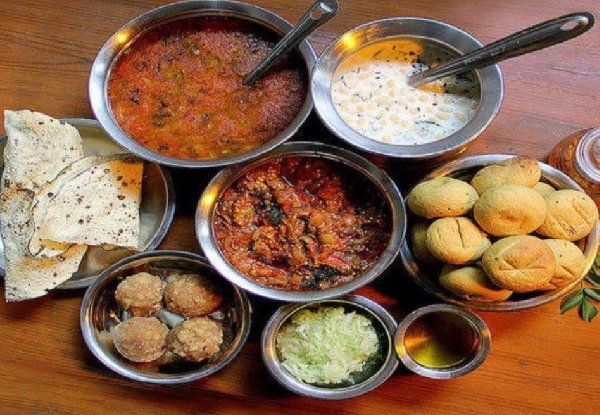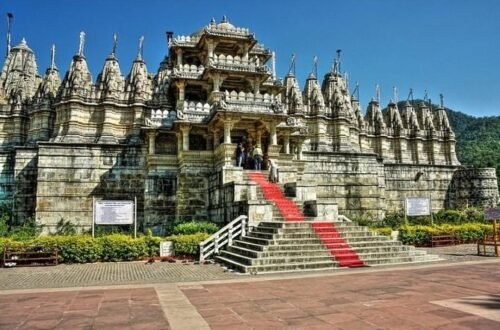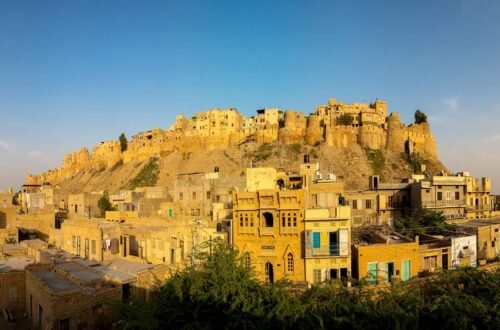When you step into North India, you’re stepping into a vibrant culinary landscape shaped by centuries of tradition, diverse cultures, and royal kitchens. From the aromatic biryanis of Lucknow to the spicy chaat of Delhi, North Indian cuisine offers an unforgettable gastronomic experience. For travelers looking to dive deeper into these flavors, choosing the right old Delhi food tour can offer not just a taste of the region, but also an understanding of its history, culture, and ingredients.
Understanding North Indian Culinary Roots
North Indian cuisine is deeply rooted in history. Mughal influences, the use of tandoor (clay oven), and the prominence of dairy products like ghee and paneer have shaped the region’s food over time. Wheat is the staple, giving rise to a variety of flatbreads like naan, paratha, and roti, often paired with rich curries.
Traditional North Indian meals are more than just food — they are a cultural ritual. Whether it’s a Punjabi family gathering around sarson da saag and makki di roti, or a Rajasthani thali served with dal baati churma, each dish tells a story of the people and their land.
Must-Try Dishes in North India
Travelers are often amazed by the diversity of dishes across North Indian states. Some iconic items every visitor should try include:
- Butter Chicken: Originally from Delhi, this creamy, tomato-based dish is now a global favorite. Its perfect balance of spices makes it approachable even for first-timers.
- Rogan Josh: A specialty of Kashmir, this lamb curry is slow-cooked to perfection with spices like cardamom and cinnamon.
- Chole Bhature: A staple in Punjabi households and street stalls alike, this spicy chickpea curry is served with fluffy, fried bread.
- Rajma Chawal: A humble kidney bean curry paired with rice, beloved across Himachal Pradesh and Uttarakhand.
The variety extends beyond meat dishes. Vegetarian options are equally abundant and flavorful — stuffed parathas, paneer tikka, aloo gobi, and more reflect the vegetarian heritage of many communities in the region.
Exploring Local Street Food Culture
No guide to North Indian cuisine is complete without highlighting the street food culture. From Amritsar to Agra, roadside stalls serve up plates bursting with flavor. Pani puri, samosas, pav bhaji, and kachori are just a few examples of snacks that locals enjoy on the go. But it’s not just about grabbing a bite; it’s about joining a crowd, standing at a stall, and soaking in the local rhythm.
Delhi, in particular, is a street food paradise. Whether you’re wandering through the crowded lanes of Chandni Chowk or stopping by a market in Karol Bagh, the options are endless. For the best immersive experience, curated food tour packages in India can help travelers discover hidden culinary gems that aren’t always listed in guidebooks.
Dining in Royal Style: The Influence of Mughlai Cuisine
Mughlai cuisine, originating in the imperial kitchens of the Mughal Empire, has left a lasting legacy on North Indian food. Rich gravies, aromatic biryanis, and slow-cooked kebabs are hallmarks of this style. Dishes like shahi paneer, mutton korma, and seekh kebabs continue to dominate both restaurant menus and home kitchens.
Dining in heritage restaurants or palace hotels across cities like Jaipur, Lucknow, and Agra allows visitors to experience this grandeur firsthand. The flavors are intense, the textures luxurious, and the aromas unforgettable.
Regional Flavors Worth Exploring
Each state in North India brings something unique to the table. In Rajasthan, food is often spicy and uses less water due to the arid climate — think gatte ki sabzi or ker sangri. In contrast, the food of Uttarakhand is more subtle, relying on locally grown pulses and grains, such as in bhatt ki churkani or chainsoo.
Punjab is known for its hearty, dairy-rich dishes, while Uttar Pradesh offers a blend of Awadhi and Mughlai styles. Meanwhile, Himachali cuisine reflects the mountainous terrain, with dishes like dham and siddu making use of seasonal produce.
Understanding these regional nuances adds depth to any culinary journey, especially for those eager to go beyond surface-level tasting.
Desserts and Beverages of the North
Sweets hold a special place in North Indian culture. Every festival, wedding, or celebration includes a spread of sugary delights. Must-try desserts include:
- Gulab Jamun: Fried dough balls soaked in rose-scented syrup
- Rasmalai: Soft paneer dumplings in flavored milk
- Jalebi: Crisp, coiled sweets dipped in saffron syrup
- Phirni: A rice pudding often served chilled in clay pots
On the beverage side, traditional drinks like lassi (sweet or salty), chaas (buttermilk), and masala chai offer refreshing accompaniments to rich meals. Thandai, made with almonds and spices, is a festive favorite.
How to Experience North Indian Cuisine Like a Local
To truly appreciate the depth of North Indian food, eat where the locals eat. Visit bustling markets, stop by roadside dhabas, or dine in someone’s home if given the opportunity. The authenticity of these experiences often surpasses high-end restaurants.
However, hygiene and guidance are crucial for tourists unfamiliar with local food handling practices. That’s why joining guided experiences like an old Delhi food tour is highly recommended. It allows you to explore confidently, with knowledgeable guides ensuring a safe and insightful culinary exploration.
Making the Most of Your Culinary Journey
Planning your trip around food experiences is a smart way to see North India from a different perspective. Whether it’s trying kebabs in Lucknow, thali in Jaipur, or a breakfast spread in Varanasi, the region’s cuisine is vast, flavorful, and culturally enriching.
Curated food tour packages in India often include not just meals but also cooking classes, market visits, and interaction with local chefs — turning a meal into a memorable story.
To truly understand the food, explore the Dishes of North India beyond restaurant menus. Learn about their origins, ingredients, and the emotions tied to them.
North Indian cuisine is more than just eating. It’s about stories, families, history, and hospitality. And for travelers who are willing to dig a little deeper, it promises not just satisfaction for the stomach — but a journey for the soul.




